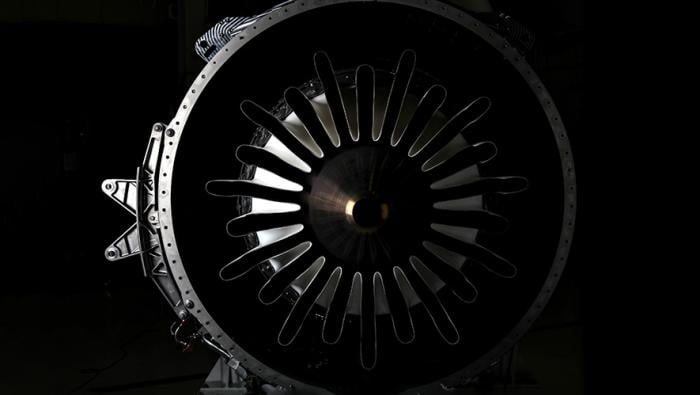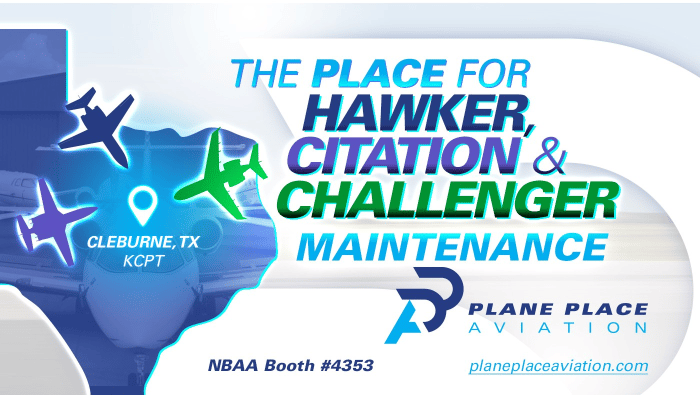|
GE Aerospace retained its top position for turbofan support in the 2025 AIN Product Support Survey for turbine engines, earning an overall average score of 8.81 from readers. The highest-rated turbofan engines this year were GE’s Passport (9.20), followed by Williams International’s FJ44 (8.77), and Rolls-Royce’s Tay (8.69). In the turboprop arena, Pratt & Whitney Canada surpassed Honeywell this year, garnering an overall average of 8.42. Its PT6 engine family received the highest mark (9.54) among all powerplants in overall engine reliability, and the Montreal-based engine manufacturer also topped the turboshaft category with an overall average of 8.19. The engine makers continued the narrative heard across the other parts of the AIN Product Support Survey, describing some hurdles in the industry. “Industry-wide challenges, including supply-chain pressures, continue to affect turnaround times and the availability of engine parts across all OEMs,” Anthony Rossi, Pratt & Whitney Canada’s v-p of customer service, told AIN. “However, we are seeing signs of improvement on the overall capacity and the flow steadiness.” Other factors also are at play. “Labor availability remains a focus across the entire aviation industry, and Rolls-Royce is proactively addressing it,” said Lindsey Stuss Gillen, the company’s v-p of sales and marketing for business aviation. |
|
|
Beyond Aero has demonstrated a full-scale example of the hydrogen-electric propulsion system it is developing for its planned BYA-1 business jet, the company said today. The demonstration of the powertrain took place at its headquarters in Toulouse, France. According to Beyond Aero, it will now continue to optimize the propulsion system as work continues with the preliminary design review for the eight-seat business aircraft, which it aims to bring to market in 2030. The company declined to say when it expects to complete the preliminary and critical design reviews, or when it would be ready to integrate all the key systems into the first full-scale prototype. EASA has engaged with Beyond Aero through its Pre-Application Services unit, which supports manufacturers in the early stages of type certification. The company is aiming to achieve approval for the propulsion system and aircraft under the European regulator’s CS-23 rules. The hydrogen-electric powertrain laboratory in Toulouse replicates three representative channels using hardware from three fuel cell providers, with total capacity of 1,200 kilowatts. Beyond Aero also reported that it has acquired the intellectual property, flight data, and assets of Universal Hydrogen, which folded in mid-2024 after running out of cash to complete its plans to convert regional airliners to hydrogen-electric propulsion. |
|
|
EASA has issued a supplemental type certificate (STC) for installation of Gogo’s Plane Simple Ka-band tail-mount antenna on Dassault Falcon 7Xs and 8Xs. Gogo and Dassault’s Le Bourget service center worked together to develop the STC, with the initial installation on a 7X. With the Plane Simple installation, the 7X and 8X can access Viasat’s Ka-band GX satellite network. This provides high-speed connectivity and enables “multiple passengers using multiple devices to access video streaming, conferencing, email, voice calling, and multiple digital applications simultaneously,” according to Gogo. Installation of the Plane Simple system is available from Dassault Falcon factory-owned and authorized service centers. Gogo plans to add similar approvals from the FAA, Transport Canada, and Brazil’s ANAC. The installation includes two LRUs: the Plane Simple antenna and SDR Gateway router. “With the equipping of the Plane Simple Ka-band terminal, passengers regularly flying lengthy international routes will have access to reliable, consistent high-speed connectivity to support productivity, entertainment, and relaxation through all phases of the flight,” said Gogo chief commercial officer Michael Skov Christensen. “The Plane Simple terminals, which are purpose-built for business aviation, not only enhance onboard Wi-Fi speeds but deliver access to the Gogo ecosystem of hardware, software, ground infrastructure, cybersecurity, and award-winning 24/7/365 customer support for a best-in-class connectivity experience.” |
|
|
Pilatus has delivered the first example of its PC-12 Pro turboprop single. Yesterday, the company announced that former Hewlett-Packard CEO Dion Weisler had received the new aircraft at its Swiss headquarters and then personally flew it back to his home in Australia. Launchd in March, the PC-12 Pro is fitted with a Garmin G3000 Prime avionics suite featuring five touchscreen displays, autopilot, autothrottle, and Autoland, replacing the Honeywell Apex system used in the previous PC-12 NG and NGX models. Additionally, the $6.8 million PC-12 Pro includes a 100-pound maximum payload increase. additional cabin options, and special paint schemes. The airplane is Weisler’s fourth PC-12—he previously owned a PC-12 NG and a pair of PC-12 NGXs. He reached Adelaide after 41 flight hours across six days, with stops in Crete, Egypt, Oman, India, Malaysia, Bali, and Darwin. “It was an incredible learning opportunity to fly my own aircraft home over such a vast distance with a factory pilot sitting right seat,” Weisler said. “In addition to visiting all these amazing countries, it really allowed me to consolidate the crossover training within the new Garmin cockpit environment and have someone right there to ask any questions about anything that popped up. I am thrilled to own this new intuitive and highly innovative aircraft, and look forward to flying many missions in the future with it.” |
|
|
Florida hangar developer Diversified Aviation is preparing for the opening of its newest hangar complex later this month. The project at Vero Beach Regional Airport (KVRB) will address the growing demand for modern aircraft storage in the state’s Treasure Coast region, the company said. It will add six 3,600-sq-ft hangars and eight 2,500-sq-ft hangars, suitable for sheltering light jets and turboprop singles. Each will feature electric bifold doors, private office space, and bathrooms. In addition, the complex will include 32 T-hangars and a tenant-only pilot lounge for flight planning and relaxation. “The hangars are more than just storage—they’re a home base,” explained Diversified Aviation's Cary Goldberg. “With our pilot’s lounge and premium amenities, we’re fostering a sense of community that goes beyond the runway. “We designed this project with pilots in mind—every detail, from the spacious box hangars with offices to the convenience of the T-hangars, is about making flying more enjoyable and accessible,” Goldberg added. “Vero Beach is an incredible aviation community, and we’re excited to elevate the experience for our tenants.” Diversified’s first hangar development was at Florida’s North Perry Airport (KHWO). Its next project will be at Orlando Sanford Airport (KSFB) in Central Florida. |
|
|
Trevor Milton purchased the SyberJet program two years ago and now plans to stretch the design of the SJ30-2 and add larger engines, new avionics, and fly-by-wire flight controls to develop the new SJ36. First flight of the $14 million SJ36 is projected in 2027, with FAA certification in 2032. While the cabin’s width and height remain very similar to the SJ30-2’s, the four-foot stretch will enable seating for nine occupants. The SJ36’s Mmo is projected to be Mach 0.88, with a long-range cruise of Mach 0.74. Maximum altitude is the same as the SJ30-2’s—at FL490—as is the 12-psi cabin pressure differential, providing a sea-level cabin at FL410. Milton soon plans to announce the selection for the SJ36’s engines, which will produce about 7,000 pounds of thrust combined. SyberJet will use one of the SJ30-2s as a flying testbed for the larger engines and for the SJ36’s avionics suite. Unlike other jet manufacturers, SyberJet is designing the avionics for the SJ36, which will be an entirely new system but using the SyberVision brand name that SyberJet devised for its planned revamp of the SJ30-2. SyberVision will feature six touchscreen displays, a flight management system, autopilot, autothrottles, and secure over-the-air updates for databases and avionics upgrades. |
|
|
Government worker unions, including the Professional Aviation Safety Specialists (PASS) and National Air Traffic Controllers Association (NATCA), called on Congress to reach an agreement on federal funding. They reiterated that the government shutdown that started today is threatening critical safety operations, along with plans to modernize the nation’s ATC system. “At a time when there is much-needed focus and movement to reshape and revamp the nation’s air traffic control system, it is troubling that Congress has not been able to pass a continuing resolution or full appropriations bills for fiscal year 2026,” said PASS national president Dave Spero. The government shut down at midnight, at the end of fiscal year 2025. With Congress at an impasse over FY2026, funding for federal operations has lapsed. Under the Department of Transportation’s contingency plan released yesterday, more than 11,000 FAA workers are being furloughed. PASS estimated that due to the shutdown, about 60% of the FAA employees it represents will be on the job but not getting paid; another 30% are furloughed initially but subject to recall, and 10% are outright furloughed. PASS represents 11,000 FAA and Department of Defense employees who install and maintain ATC and national defense equipment, as well as conduct safety inspections. NATCA, meanwhile, estimated that more than 2,350 aviation safety professionals it represents are furloughed, including aircraft certification engineers and aerospace engineers. |
|
|
Tropic Air has expanded its fleet with the addition of three Cessna Grand Caravan EXs, bolstering the Belize-based operator’s passenger and cargo services across Latin America. The turboprop singles will support Tropic Air’s regional connections linking Belize with Honduras and Mexico. Tropic Air, founded in 1979 to support Belize’s growing tourism industry, now operates a fleet built around the Caravan family, delivering air charter and scheduled travel options to customers throughout the region. The aircraft are also central to its cargo services, linking remote destinations and supporting business activity. “Whether supporting business travel, tourism, or cargo operations, the Cessna Grand Caravan EX is equipped to access diverse terrain and remote runways around the globe,” said Lannie O’Bannion, Textron Aviation's senior v-p of sales and marketing. “Tropic Air’s continued investment through these aircraft underscores its adaptable performance and dependable comfort—qualities that are ideal for connecting communities and travelers across Latin America.” The deliveries come as Textron Aviation celebrates the 40th anniversary of the Caravan’s first flight. More than 3,100 Caravan and Grand Caravan aircraft have been delivered to operators worldwide, with certification in 100 countries and more than 25 million flight hours logged globally. |
|
|
The FAA recently implemented a policy that expands the kinds of harnesses that can be used when utility line workers perform human external cargo (HEC) activities. According to Vertical Aviation International (VAI), this now covers “U.S. government-accepted harnesses that meet standards recognized by the American National Standards Institute (ANSI) and the American Society of Safety Professionals (ASSP) and accepted by the Occupational Safety and Health Administration (OSHA).” VAI explained that the new policy, updated on September 8, “permits helicopter operators to use ANSI/ASSP Z359.11-compliant full-body harnesses for Class B human external cargo under…[FAR] Part 133. It permits operators to use these harnesses as an alternative to TSO-C167-approved harnesses when they are listed in the operator’s Rotorcraft-Load Combination Flight Manual (RLCFM).” Operators will need to update their RLCFM to reflect use of these harnesses and include inspection, care, retirement, and life-limit procedures, and make sure crew training and preflight checks match the new RLCFM language. “VAI has pushed for this flexibility since 2017,” said Chris Martino, VAI’s senior director of operations and international affairs. “It improves safety, reduces friction for operators, and supports the skilled teams who keep critical infrastructure running.” |
|
|
Join us for lunch on Wednesday, October 15, at NBAA-BACE in Las Vegas to hear from a distinguished panel of leaders in business aviation and explore the future of in-flight connectivity. This exclusive event will feature key updates, highlighting innovations that are shaping the passenger experience and operational capabilities in the skies. Seating is limited. Sponsored by Honeywell Aerospace and Viasat. |
|
|
|
|
|
|
AINalerts News Tips/Feedback: News tips may be sent anonymously, but feedback must include name and contact info (we will withhold name on request). We reserve the right to edit correspondence for length, clarity, and grammar. Send feedback or news tips to AINalerts editor Chad Trautvetter. |
|
AINalerts is a publication of AIN Media Group, 214 Franklin Avenue, Midland Park, New Jersey. Copyright 2025. All rights reserved. Reproduction in whole or in part without permission is strictly prohibited. |










.gif)






